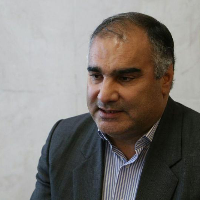Long-term and microstructural studies of soft clay stabilization using municipal solid waste and Nano-MgO as an Eco-Friendly Method
Author(s):
Article Type:
Research/Original Article (دارای رتبه معتبر)
Abstract:
This study provides a practical solution to manage non-hazardous waste and aid the environment. The largest group of non-hazardous waste is called municipal solid waste (MSW) which can be effectively used as an alternative material in civil projects. In this research, as an alternative to traditional modification methods of soil which causes global warming, the soft clay (Clay) was chemically modified by four different percentages of MSW in soil dimensions (15%, 25%, 35%, 45%) in 28 and 120 days. The optimum percentage of MSW addition (15%) to the Clay at the curing age of 28 days increased the unconfined compressive strength (UCS) and California bearing ratio (CBR) by 1.28 and 3.34 times, respectively. Given that higher percentages of MSW reduce the UCS and CBR in the specimens, four percentages of Nano-MgO, i.e., 0.25, 0.5, 0.75, and 1% were used for stabilization. The specimens containing optimum percentages of MSW (15%, 25%) and stabilized with 1% Nano-MgO could improve UCS and CBR 2.34 and 5.59 times, respectively that results had better durability over 120-days which can be attributed to the CBR testing condition. The cause of the increase in UCS and CBR was investigated using microstructural analysis for 120 days of curing. The specimen with high durability approved the cement bond formation with Anorthite & Dolomite minerals. In conclusion, using optimum MSW and Nano-MgO effectively solved the Clay problems in suitable conditions and allowed higher percentages of MSW to be removed from the environment.
Keywords:
MSW , Eco-Friendly , Nano-MgO , Stabilization
Language:
English
Published:
Anthropogenic Pollution Journal, Volume:7 Issue: 1, Winter and Spring 2023
Pages:
35 to 54
https://magiran.com/p2621797
مقالات دیگری از این نویسنده (گان)
-
Evaluation of Temperature Variation Effects on the Swelling Characteristics of Fine-graded Soils improvement with Sodium Alginate in Constant Volume condition
M. Behzadipour, N. Khayat *
Sharif Journal Civil Engineering, -
Geotechnical zoning of Ahvaz soil using Geographic Information System (GIS)
*, Ali Nourozi Mohammadi, Ahad Nazarpour
Amirkabir Journal of Civil Engineering, -
Experimental Investigation of Geotechnical Behavior of Collapsible Soils Improved with Nanomaterials
*, Aliakbar Soltani, Seyed Morteza Marandi
Amirkabir Journal of Civil Engineering, -
Coupling Effect and Superposition Law in Soil Treatment Systems Incorporating Vacuum Preloading
Mohammad Mehdi Pardsouie *, Seyed Mohammad Ali Zomorodian, , Mohammad Hadi Pardsouie
Civil and Project Journal,



